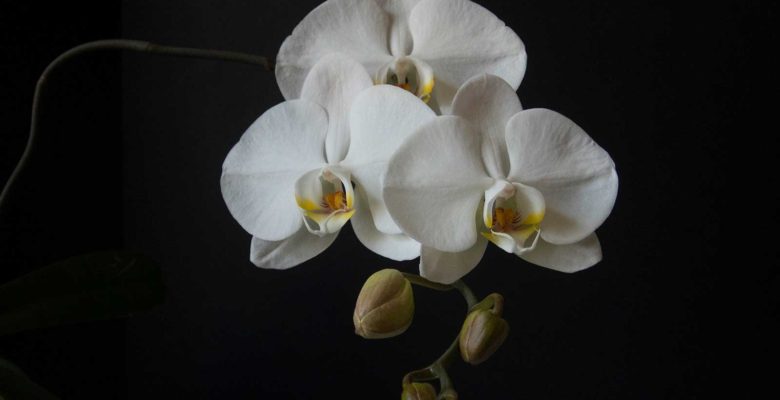
By Sue Hynes
You’re out shopping at Wal-Mart, the grocery store, Lowes, or Home Depot, and you notice a beautiful display of orchids. You think, “How beautiful”, but you don’t know how to keep an orchid alive, so you walk on by.
Most likely, you just walked by a Phalaenopsis (pronounces fail en OP sis) Orchid, also known as a Moth Orchid. These are very popular because they are easy to take care for and the showy blossoms last for weeks, if not months.
The first step in buying any plant is to pick a healthy one. Pick the orchid up and inspect it, looking for these 4 signs of fitness:
1. Thick, dark green leaves
Healthy Phalaenopsis orchids that have received appropriate care have firm, thick leaves. Avoid plants with rubbery, thin leaves that are yellowish or light green. Leaves that have a dark red tint but are still thick and firm are usually healthy and may indicate that the plant has been getting extra light.
2. Silvery roots with green tips
These types of orchids tend to have roots that grow down into the planting medium and roots that grow outward or upward. These visible roots should be silvery in color. Green tips indicate new growth. Avoid plants that have brown, dry roots, which are dead.
3. In a container with a hole in the bottom
Soggy roots are a death sentence for these orchids. Make sure the pot has good drainage, so that water can run freely through the pot and out the bottom. This allows the potting medium to dry out between watering. Also, orchid potting mix should have been used (versus regular houseplant potting soil). Orchid mix is ‘chunky’ medium, consisting of pieces of bark, sphagnum moss, etc. Sometimes, these orchids are planted in just sphagnum moss, which can work too.
4. Spike(s) still have at least a few unopened buds
These orchids send up long stems, known as ‘spikes’, which bud out and bloom. Look for a plant that still has some unopened buds near the end of the spike. These buds indicate that the plant should remain in blossom for many more weeks. Sometimes, you can find plants that have more than one spike, which just adds to their showiness. Plants that have blossoms that are drying out and dropping off indicate that it’s blooming cycle is going by. I find that once a few leaves drop, the rest follow suit very quickly.
Sue Hynes started collecting Phalaenopsis orchids about 3 years ago when she began using them to decorate her home when it was on the real estate market. Since that time, she has collected over a dozen of these orchids. She attends MEOS meetings regularly and contributes her orchid success to the more experienced members who freely share their knowledge and love of orchids at every meeting.

